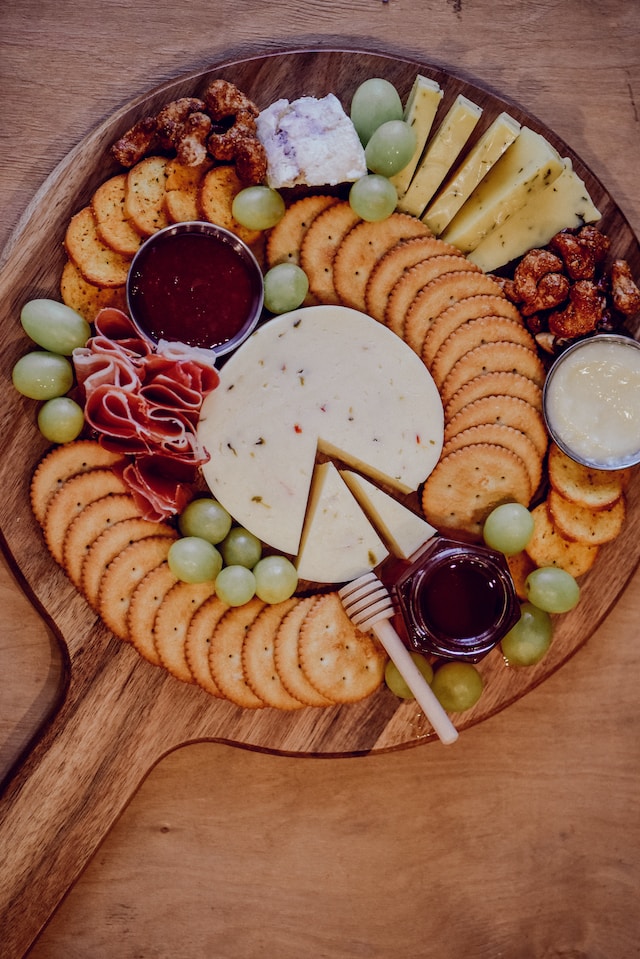Navigating the changing landscape of dietary needs as we age doesn’t have to be overwhelming. It’s about making informed choices that suit your body’s changing needs. By understanding the nuances of nutrition, we can empower ourselves and our loved ones to ensure vitality and well-being. Whether it’s maintaining muscle mass, focusing on key nutrients, or adapting to unique dietary requirements, a thoughtful approach to nutrition lays the foundation for healthy aging.
Sensory changes, such as a decreased sense of taste or difficulty chewing, can impact the enjoyment of meals. Balancing flavors and incorporating a variety of textures can enhance the eating experience, making meals more appealing. As a caregiver, you can play a crucial role in ensuring proper nutrition becomes a part of your loved one or client’s daily life.
Nutrition isn’t just about the number of calories consumed; it’s about the quality of those calories. A balanced diet, rich in vitamins, minerals, and other essential nutrients, forms the bedrock of good health. As caregivers, our goal is to provide meals that nourish not just the body but also the soul.
The first step in encouraging proper nutrition is recognizing that each person has unique dietary requirements. Consider any medical conditions, dietary restrictions, or personal preferences that may impact food choices. Engage in open and honest conversations with those under your care, fostering a sense of collaboration rather than imposition.
Add Extra Spices
Aging might bring changes to your taste buds, but that’s no reason for meals to become bland. Crafting meals that are both delicious and nutritious requires a bit of creativity.
Balance flavors and mix up textures to make your meals a delight. Experiment with new herbs and spices to enhance flavors without relying on excessive salt or sugar. It’s not just about nutrition; it’s about enjoying what you eat. Try a mild curry, or maybe even a spicy penne rosa—either can help bring light to a previously boring palate!
Make the Meal Look Appealing
Beyond the nutritional aspect, mealtimes are an opportunity for connection and joy. Create a pleasant and relaxed atmosphere where conversation flows freely. Share stories, laughter, and the simple pleasure of good food
Pay attention to presentation, making the dining experience visually appealing. These efforts not only enhance the enjoyment of meals but also stimulate appetite. Arrange the items nicely on the plate and add spices like a leaf of basil or a sprig of mint to make the plate look special!

Create Colorful Plates
Opt for a rainbow on the plate, as it’s a nutritional powerhouse. Try to include a variety of colorful fruits and vegetables to ensure a diverse range of vitamins and minerals.
Whole-grain lean proteins and healthy fats should also feature prominently. Different hues often indicate diverse nutrients, ensuring a well-rounded meal that supports overall health.
Embrace Small, Frequent Meals
Sometimes, a big meal can be overwhelming. Consider smaller, more frequent meals throughout the day. This not only eases digestion but also ensures a steady stream of energy, keeping you fueled and ready for the day.
Incorporate Snacks Wisely
Snacking often gets a bad rap, but when done mindfully, it can be a valuable part of a balanced diet. Opt for nutrient-dense snacks such as nuts, fruits, or yogurt. Be mindful of portion sizes to avoid excessive calorie intake. Snacks can serve as a bridge between meals, preventing energy dips and promoting a steady release of nutrients throughout the day
Related: Healthy Eating Hacks for Seniors
Get Creative in the Kitchen
Cooking can be a joy, not a chore. If you are a caregiver, involve your loved one or client in meal preparation or introduce simple, fun recipes. This not only promotes a sense of accomplishment but also ensures meals are tailored to personal tastes and preferences.
Prioritize Protein
Protein is a friend to aging muscles. Ensure each meal includes a good source of protein—whether it’s from lean meats, beans, or dairy. It supports muscle health, aids in recovery, and contributes to an overall sense of strength
Hydration is Essential
Proper nutrition isn’t just about solid foods; hydration is equally critical. Encourage regular water intake throughout the day. Herbal teas and infused water can add variety for those who find plain water unappealing. Monitoring hydration is particularly important for individuals with certain health conditions, so be attentive to individual needs.
Related: The Importance of Staying Hydrated
Consider Dietary Supplements
Sometimes, getting all the nutrients from food alone can be a challenge. Consult with a healthcare professional to explore the possibility of dietary supplements. This ensures that your body continues to receive essential vitamins and minerals to bridge any nutritional gaps as you age.
For caregivers providing care to seniors, the social aspect of senior nutrition is crucially important.

Social and Emotional Factors
Beyond the physiological aspects, the social and emotional aspects of eating become increasingly important for seniors. Maintaining a social connection during meals, whether through shared family dinners or communal dining in senior living communities, contributes to a positive relationship with food.
Share Meals, Share Stories
There’s something magical about a shared meal. It’s not just about the food; it’s an opportunity to share stories, laughter, and precious moments. Encourage communal dining, whether it’s with family, friends, or fellow seniors. These shared experiences enhance the pleasure of eating and contribute to emotional well-being.
Cultivate Mealtime Rituals
Rituals add a sense of structure and comfort to our lives. Create mealtime rituals, whether it’s setting a beautifully adorned table, saying a few words of gratitude, or sharing a favorite family recipe. These rituals turn meals into cherished moments, fostering a positive relationship with food.
Social Clubs and Community Events
Encouraging seniors to join social clubs or participate in community events centered around food provides a dual benefit. Seniors not only enjoy delicious meals but also engage in meaningful social interactions. It’s an avenue to make new friends, share culinary experiences, and strengthen the sense of community.
Cooking Together
Cooking is an art, and learning together makes it even more enjoyable. Encourage seniors to explore cooking classes at the local community college or collaborate on preparing meals together. This provides an enjoyable and soothing way to encourage the social aspect and promote a sense of accomplishment.
Related: Easy Recipe for Seniors: Tortilla Soup
Gardening and Farm-to-Table Experiences
Connecting with the source of our food adds a delightful dimension to the dining experience. Engage in gardening activities or participate in farm-to-table experiences. The connection with nature and the journey from garden to plate enriches the nutritional and social aspects of meals.
Conclusion
Aging gracefully is not about some elusive fountain of youth; it’s about embracing each chapter with gusto. And the secret weapon? A balanced diet. It’s not rocket science; it’s the small, everyday choices that add up. After all, when it comes to nutrition, one size rarely fits all. By tailoring nutrition to individual requirements, we unlock the door to increased well-being for healthy aging.


















